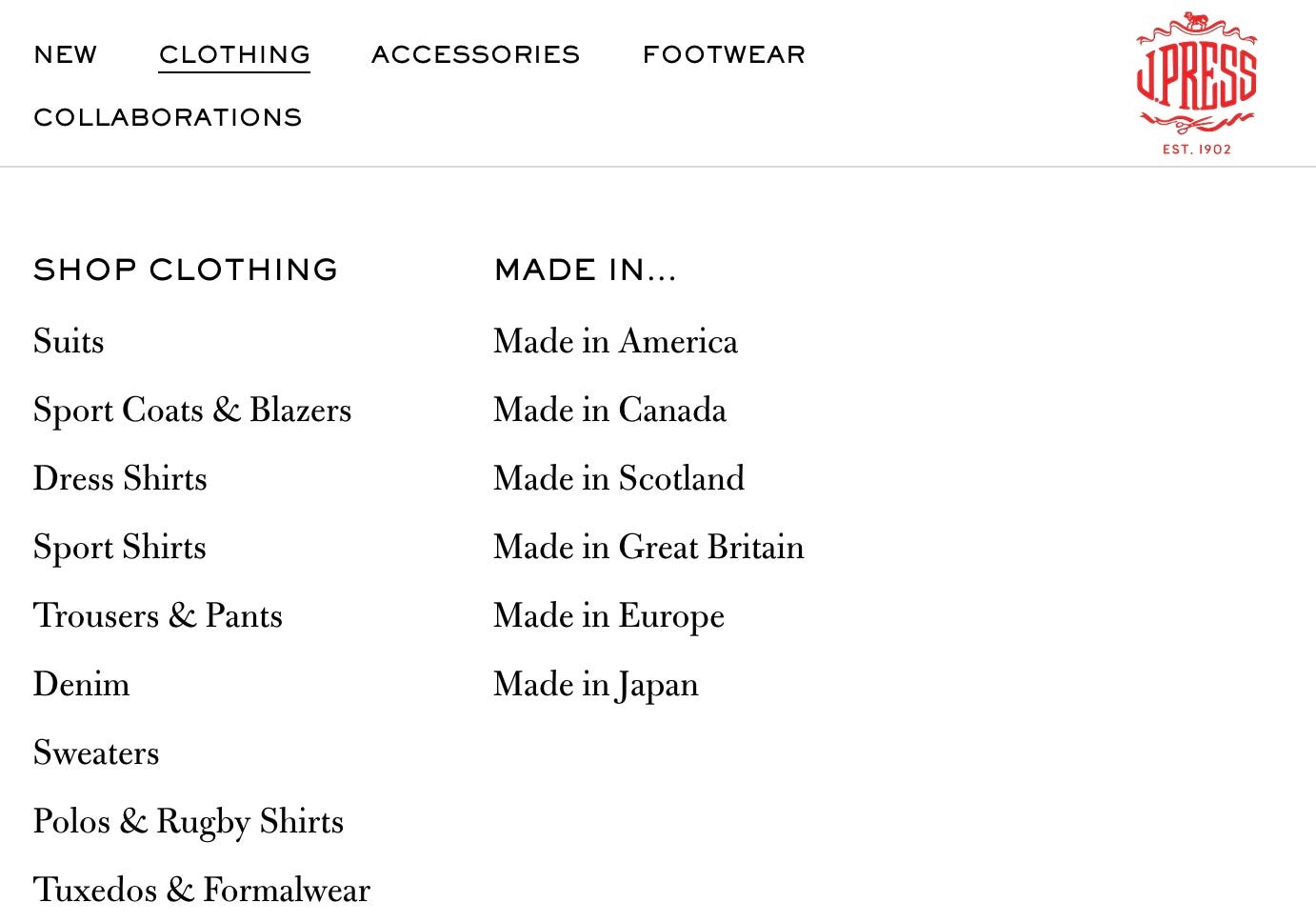Made-in-America Is Making a Comeback
Plus, the downside of the Schanzer-Stephens plan for Gaza

From giant mass-market retailers to niche high-end haberdashers, “made in America” is making a comeback in communications with consumers.
Walmart is running a television commercial featuring Fire Department Coffee, a veteran-owned business founded in Rockford, Illinois. “Most of what Walmart spends goes to products made, grown, or assembled right here in the U.S. so we can invest back into our community,” the commercial says, describing Fire Department Coffee as “a mighty fine American business.” A Fire Department Coffee press release says, “We connected with Walmart through their Open Call initiative, a program designed to support U.S.-made, grown, or assembled products.”
At a smaller scale than Walmart, if there is a men’s clothing brand right that is hot right now it is Buck Mason. The Wall Street Journal wrote about it on July 24 in a piece reporting that its “yearly growth has steadied to between 50% and 100%, with annual sales over $100 million.” A Journal headline said, “By reworking classics and being ‘relentless on quality for value,’ Buck Mason has emerged as the next big brand for just about every kind of guy.” Not mentioned by the Journal, but significant: Go to the Buck Mason home page and the top navigation bar looks like this:
There’s “men,” “women,” and “made in the USA” an acknowledgement that, first, it’s even feasible in 2025 to make clothing in the USA and second, that there are customers out there who are interested in buying it. “We don’t just design clothes; we make them. Buck Mason Knitting Mills allows us to manufacture entirely domestic, American-made products,” the website says. “Farms in California, Texas, and Georgia provide the premium cotton we use. From cotton grown and spun in America to our new mill in Mohnton, Pennsylvania, every step of the Buck Mason Knitting Mills process is domestic. That means quality control, but so much more. It means jobs, dignity, and pride.”
Even J. Press, the Ivy League preppy purveyor of hook-vented natural shouldered suits and “Shaggy Dog” sweaters, now has its website sorted with a “made in America” option, which I had not noticed in the past. That retailer has been Japanese-owned for quite some time.
Sure, these are just three anecdotes, not government data about manufacturing output. An open question is whether “jobs, dignity, and pride” or “invest back into our community” will be worth, for American consumers, the higher prices that sometimes apply to American-made products. Maybe some customers will be proud of products made in Canada or Indonesia or England or Italy or Mexico, and “invest” the money they save from the lower prices in other American goods or services that are less easily imported from abroad. That might even be better for America, on a net basis.
But to understand what’s happening in America, you need to get beyond the academic economists and the legacy media journalists reliant on the academic economists, and watch some of the cultural signals. There are lots of challenges to bringing back American manufacturing, from the academic economists confidently predicting that it won’t happen and that it would be a mistake to try, to the more practical difficulties of finding workers who will come to work consistently. Yet there are indications that consumers have some appetite for it. And generally in America, consumers get what they want.
Tariffs may interact with that desire by evening out some of the price differentials. But this is not primarily a tariff or trade-barrier story, it’s something else—patriotism, nationalism, the public mood, maybe some anti-China or anti-Mexico sentiment. It’s a trend worth keeping an eye on.
The downside of the Schanzer-Stephens plan for Gaza: Bret Stephens today (“Where Can Gaza Go From Here?”) and Jonathan Schanzer in Commentary (“A Third-Way Endgame for Israel in Gaza,” July 26) both advise that rather than going in and taking over the remaining 25 percent of Gaza, Israel basically surround those areas, issue demands, and allow humanitarian aid but not reconstruction.
Keep reading with a 7-day free trial
Subscribe to The Editors to keep reading this post and get 7 days of free access to the full post archives.




